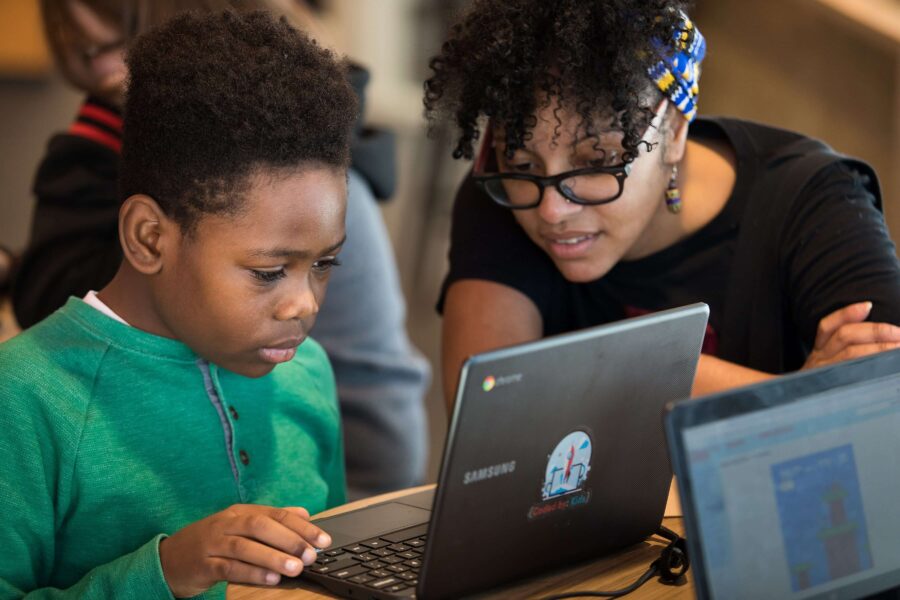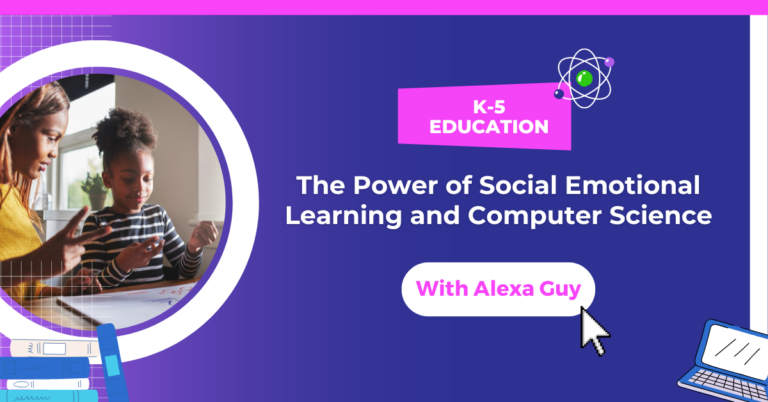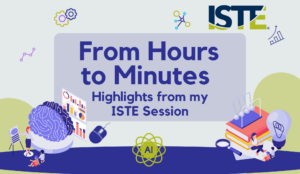Perseverance, resilience, self-management, and confidence are all traits many teachers promote in hopes that students will develop into critical thinkers and proactive problem-solvers. Social Emotional Learning (SEL) is most effective when applied through real-world, interactive, and engaging opportunities, rather than in isolation. SEL is fundamental to personal and academic development. For example, students persevere as they debug code, self-manage as they matriculate through projects, and build confidence as they finally achieve success. It is a core part of STEM and computer science.There are many benefits to exploring SEL in computer science activities in your classroom.

In today’s blog post, I’ll be sharing different social emotional activities to incorporate into your computer science learning.
What is SEL, or Social Emotional Learning?
According to CASEL, “SEL is the process through which all young people and adults acquire and apply the knowledge, skills, and attitudes to:
Develop healthy identities
Manage emotions
Achieve personal and collective goals
Feel and show empathy for others
Establish and maintain supportive relationships
Make responsible and caring decisions”
SEL is often integrated in schools across the country as many teachers recognize and value it. Often in elementary school settings, SEL integration takes place in Morning Meetings, Circle Time, and Character Education.
Why SEL and Computer Science?
SEL in computer science prepares students for more than a career in technology but overall in life. Computational thinking and active problem-solving skills equip students with necessary tools. While these tools are important to the classroom they are significant to life, and students can learn these skills as early as elementary school. Let’s take a look at ways teachers can incorporate SEL with computer science.
SEL and Coding in Action
While coding in an elementary classroom, students may need extra support in self-regulation. Often, elementary school students are in the midst of learning what emotions are, how they feel, and how to manage them. We want students to have a positive association with coding, so the ability to develop skills for self regulation provides students as young as 9 years old a roadmap to achievement and success.
During your coding or computer science lessons, you might have students revisit the emotional skill discussed during the morning meeting. Have students revisit the skill and identify strategies taught to combat any challenges they predict they may encounter while completing the task, especially for those new to coding. Students might encounter the following:
Feeling overwhelmed
Lack of proactive problem solving
Outward expression of frustration
Lack of effort out of frustration
Feeling “stuck”
As students learn to identify these emotions, you might then share different tools and strategies to help them overcome these feelings and regain their independence to success. Some of the strategies include:
Self-advocacy- informing an adult about feelings
Brain breaks
As students progress through programming, they can use these tools to help self-regulate.
SEL Check-ins, Digital Journaling, and More…
Teachers can incorporate other typical interactive tools and strategies. Check-out activities from Code.org:
Conduct a elementary SEL Check-in/check-out with Nearpod
Respond to SEL discussion prompts
Have students’ create a digital journal
Create a digital greeting card for a peer or someone in their life that is having a challenging time
Identify a particular emotion and code a digital image of the emotion
Thanks for checking out my blog about social emotional learning activities in computer science. Want to learn more? Contact Miami EdTech for more information!






